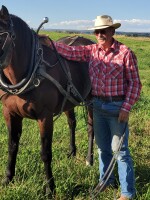During a Fourth of July celebration last week, President Trump signed a huge tax and spending bill that is approved by the major agricultural organizations and commodity groups. The bill increases defense and border wall funding, and makes Trump’s 2017 tax cuts permanent, while offsetting some of those costs through cuts to Medicaid, food assistance programs, student loans and clean energy programs. But House Agriculture Committee Ranking Member Angie Craig stated that “Today marks a grave turning point for our country, one which leaves rural communities and farmers behind, and places us on the road toward increased hunger, less prosperity and fewer opportunities for working families, while taking food away from millions of children, seniors, veterans and people with disabilities. She also contends that the legislation will make ordinary Americans pay for tax breaks for the ultra-rich and large corporations.
Agricultural organizations are in favor of this legislation, because, according to a recent USDA forecast by the Congressional Budget Office, the bill includes a $66 billion increase in farm program spending over 10 years, which will be paid for in part, by historic cuts to the Supplemental Nutrition Assistance Program. Direct federal farm support will hit over $42 billion in 2025, that’s a 354% increase over 2024’s $9.3 billion, and is almost as large as 2020’s $45.6 billion in support due to the first Trump administration-imposed trade tariffs. Economists are predicting that 2025’s total net farm income, forecast at $180 billion, will be just $2 billion less than 2022’s record net farm income of $182 billion, when government farm payments were $27 billion less than what will be this year’s near-record amount.
Cattle producers stand to have a very good year as well, according to University of Kentucky Economist Kenny Burdine. He contends that The recent strength of the current cattle market has been a hot topic, with the beef cow inventory at a 60-plus year low and demand for beef being very strong, and with cow-calf operations being clearly in the driver’s seat. Calf values are more than double what they were three years ago, which provides an opportunity for cow-calf producers to invest in their cowherds by expanding them if they have the pasture and labor resources to handle larger herd numbers. Of course, if many cow-calf producers decide to expand their herds, the economics can quickly change, going from a profitable number of calves in the market to so many that calf prices will fall into another low profit situation.
Farmers growing corn may have some headwinds this year too. Josh Linville, vice president of fertilizer for StoneX Financial Inc., says the current fertilizer and corn price ratio is at historic levels. In other words, the price for the cost of fertilizers used by farmers to improve corn yields may not be a good investment. He points to urea, a dry fertilizer providing nitrogen, has the third worst return on investment in history, UAN, a liquid nitrogen fertilizer has the second worst return, and phosphate fertilizer is returning the worst investment in history. So while these fertilizers can improve corn yields, the increase in production may not be worth the investment in the fertilizers especially if they are applied at optimum rates. These economics of fertilizer application can also be applied to other crops, such as hay, that is commonly grown in the Four Corners Region.
Warren Buffet wrote, “Do not save what is left after spending, but spend what is left after saving.”




